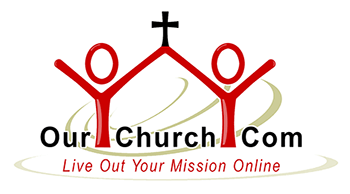One of my underlying communications philosophies is that for most organizations, the website should be the hub of communication.
A website can serve as an excellent communications hub because:
- It is accessible all the time (unlike verbal announcements made in a worship service which are often missed)
- It is accessible everywhere (unlike paper bulletins, programs and newsletters which are often lost)
- You control the design and format (unlike social media sites that determine the format of your profile on their site)
- You can optimize it for search engines (unlike social media sites and offline communications)
- You can put as much content as you like on it and organize it however you like (unlike verbal and paper communication and email which have time and space limits)
- The content you include can be text, audio, or video
- You can include links to that content in other forms of content.
Turning Visitors into Subscribers
But your people – church members, students, customers, volunteers, etc – are not going to check your site every day for new information. So, the goal of every website should be two fold:
- A) Help people find the specific information they’re looking for or do the specific action they want to do.
- B) Get the first-time visitor to subscribe to ongoing communication.
We touched on A last week when we talked about usability in Top 12 Usability Web Design Mistakes to Avoid
B is critical to turning a one-time visitor into a regular, engaged part of your community. On-going communication may include:
- Subscribing to your e-newsletter
- Subscribing to the RSS feed of your blog
- Liking your Facebook page
- Following you on Twitter
- Adding their phone number to an automated calling or texting service
Designed to Subscribe
The design of a website can have a huge impact on the number of visitors become subscribers. Here are 7 web design tips that can help you increase the number of subscribers and make your site a stronger hub of communications.
- Prominently display social media icons at the top of your site on every page.
- Include a call to action near those icons like “Like us on Facebook” and “Follow us on Twitter”
- Include a “subscribe to newsletter” widget in the sidebar of every page.
- Include a call to action near the newsletter subscribe widget.
- Consider including widgets in the sidebar that show your latest Tweets or Facebook updates.
- If you blog, prominently display RSS/subscribe icons towards the top of the blog
- If your organization publishes a print newsletter, make it available on your website, and make it possible to subscribe on your website to receive it via email.
Of course, once you decide your website is going to be the hub of your communications and you decide to make it possible for people to receive info from any of the means mentioned above, you’ve got to get any new information on your site quickly and consistently. And you’ve got to notify subscribers/followers/Facebook likers/etc consistently. But that getting beyond the issue of design and the scope of this post.
Is your website the hub of your organization’s communications?
If it is (or is supposed to be) what design changes can you make to make it function more effectively as a hub?
Join us 3 PM ET Thursday for #WebDesignChat! This week we’ll be discussing this very topic.

